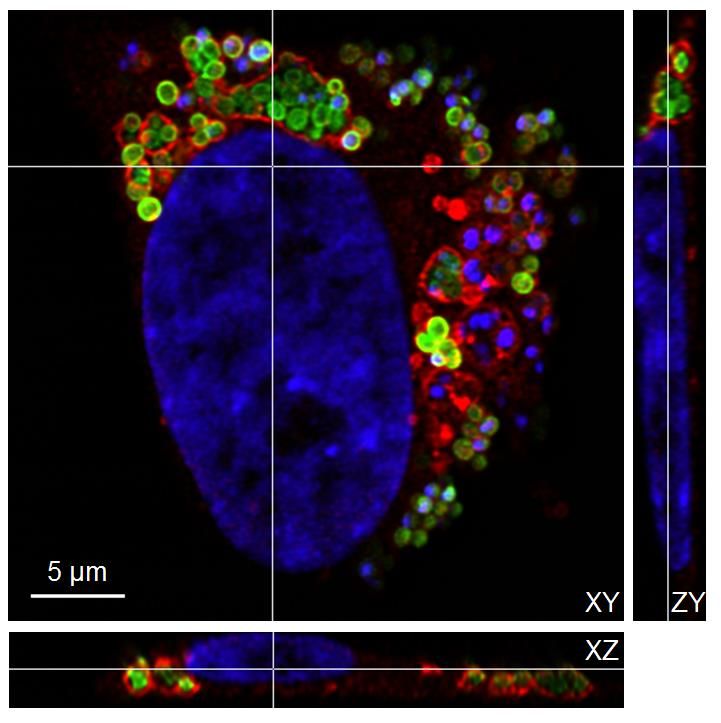Resistance or persistence?
What is the difference between resistance and persistence? While resistance to antibiotics is caused by mutations and passed on to the bacteria’s offspring, persistence corresponds to a temporary tolerance to antibiotics; the offspring resulting from divisions of these persistent bacteria are in turn susceptible to antibiotics.
This phenomenon was already described by Joseph Bigger in 1944 (Bigger, Lancet, 1944). He observed that penicillin only kills 99% of a staphylococcus culture. Bigger defined the surviving 1% bacteria as “persisters”. These persisters are often in a “dormant” state and do not divide; this is sometimes considered to be the reason why antibiotics are ineffective.
The aim of our work is to identify the host factors that favor the formation of persisters. Recurrent infections often occur in connection with abscesses. Abscesses are characterized by an acidic environment, defined by a low pH value. We investigated the influence of pH on the formation of persisters (Leimer, JID, 2015). In fact, the proportion of persisters was found to be significantly higher under acidic conditions than under pH-neutral conditions.
